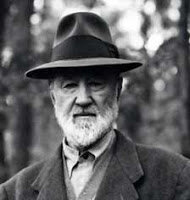Ives’ String Quartet No. 2
I have long had a casual relationship with Charles Ives’ String Quartet No. 2. I was introduced to his music as an undergraduate, using it as a springboard to find my way into contemporary repertoire after having grown up hearing precious little of anything written post-1913 that wasn’t Broadway, mainstream jazz or pop music.
Ives opened up a whole new way of looking at music for me, a child-like way of toying with the material until it satisfied both child and grown-up sensibilities. No matter how eccentric, the result always seemed rooted in simple “what if” questions: If music can modulate from one key to another, why can't it be it two or more keys at the same time?
